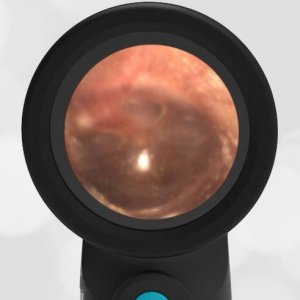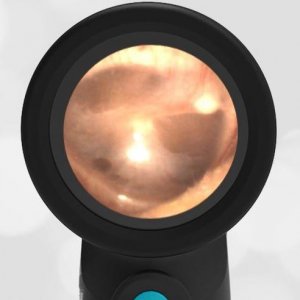
Middle Ear Effusion
A 32-year-old woman presents to the emergency department complaining of left ear pain. She reports having the pain for about one week. She was seen in the clinic a week ago, diagnosed with left acute otitis media, and placed on an oral antibiotic and antibiotic drop, both of which she has completed. She reports no improvement in pain and describes a fullness in her left ear. Prior to the ear pain starting a week ago, she had mild viral symptoms including congestion and a runny nose. She tested negative for COVID-19. A colleague examined the patient with a traditional analog otoscope and thought the patient likely has unresolved otitis media and that the ear looked “red.” He asks for your input using the Wispr digital otoscope. What is your recommendation to the colleague?
The patient has a middle ear effusion (MEE).
Compare the left ear MEE to the normal right ear.
- Middle Ear Effusion (left ear)
- Normal Ear (right ear)
This is a common clinical scenario. Unresolved ear pain after a course of antibiotics prescribed for acute otitis media (AOM). In this case, the patient does not have acute otitis media. The Wispr image clearly shows a non-bulging tympanic membrane (eardrum) with normal malleus bony landmark. In addition, there are air-fluid levels surrounding the malleus, a clear indication of middle ear effusion.

The air bubbles indicate the middle ear space is being ventilated by the eustachian tube. There is no indication for prescribing another course of antibiotics. The patient was shown both the image of the left ear with MEE and her normal right ear. She was reassured by being able to see the images herself and no further discussion of antibiotics was necessary.
Here are the videos from both the left and right ear exams.
|
Left Ear Video |
Right Ear Video |
Additional information on normal, MEE, and AOM can be found here.









































































































































































































